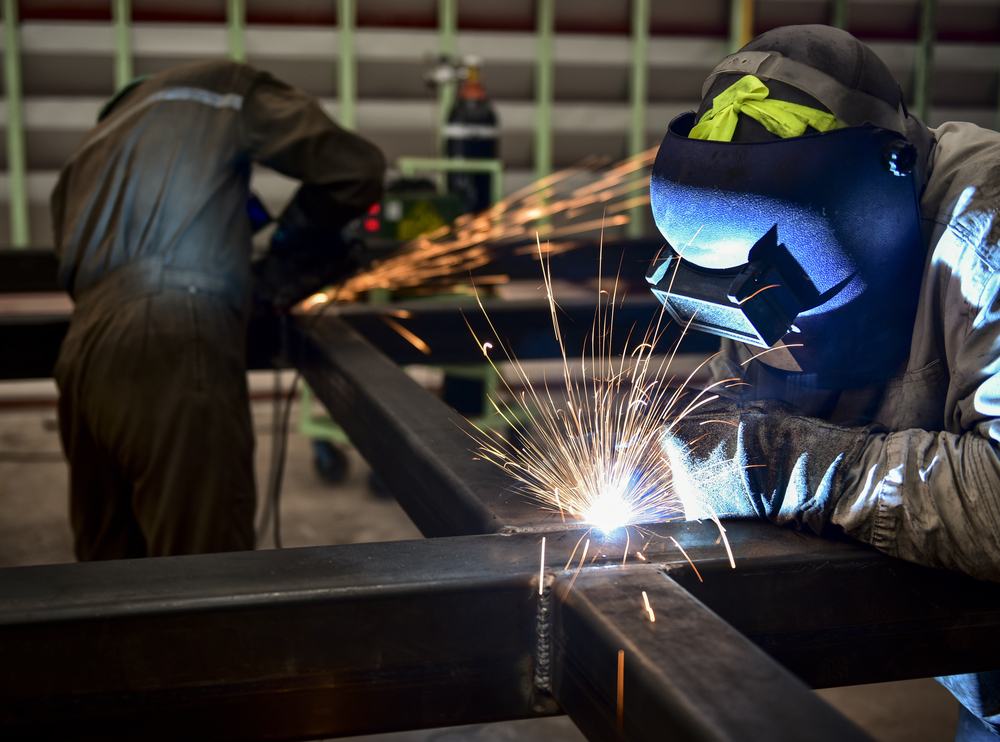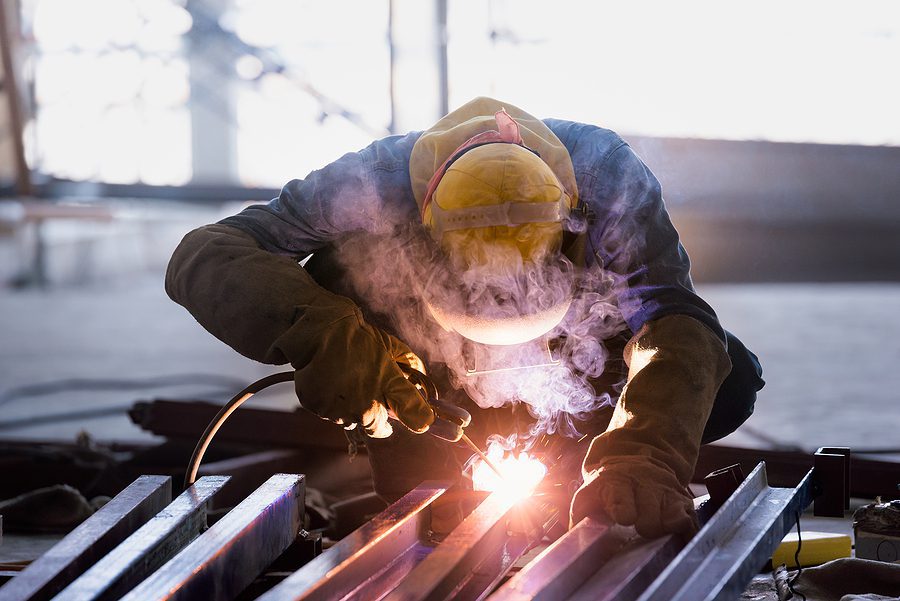Common Welding Repair Issues and Just How to Address Them Efficiently
Welding fixings frequently run into a variety of concerns that can threaten the integrity of the end product. Typical problems consist of poor infiltration, porosity, and misalignment, to name a few. Each issue offers distinct obstacles that require particular techniques for resolution. Recognizing these problems is necessary for welders aiming to improve their skills and end results. This conversation will discover these typical welding repair service issues and reliable methods to address them.
Poor Infiltration
Insufficient penetration happens when the weld metal falls short to completely fuse with the base material, causing weak joints and potential structural failures. This concern commonly comes from insufficient heat input, incorrect electrode angle, or inappropriate welding speed. Welders may come across insufficient infiltration because of a mistake of the needed specifications for a certain material thickness or type. In addition, contamination on the base material's surface area can impede effective bonding, aggravating the issue. To address insufficient infiltration, welders need to ensure appropriate setups on their equipment and preserve a clean work surface area. Routine examination of welds is recommended to determine any kind of deficiencies early, enabling prompt adjustments and the avoidance of compromised architectural stability in welded settings up.
Porosity
Porosity is an usual problem in bonded joints that shows up as small gas bubbles caught within the weld metal. This flaw can compromise the integrity of the weld, leading to minimized toughness and possible failure under anxiety. Belgrade. Porosity generally occurs from contamination, wetness, or improper welding techniques, which allow gases to leave right into the liquified weld swimming pool. To deal with porosity, welders must ensure appropriate surface preparation, preserve a clean working environment, and use ideal welding criteria. Additionally, selecting the best filler product and securing gas can minimize gas entrapment. Routine examination and screening of welds can assist determine porosity early, ensuring timely corrective actions are taken, thus protecting the high quality and reliability of the welded framework
Imbalance
Misalignment in welding can occur from various variables, consisting of incorrect arrangement and thermal development. Recognizing the origin is crucial for efficient resolution. Several correction methods are offered to straighten elements and assure architectural honesty.
Reasons of Imbalance
Welding misalignment usually originates from a variety of underlying issues that can endanger architectural stability. One main reason is incorrect fit-up of components prior to welding, which can result in voids and unequal surfaces. Variations in thermal development during the welding procedure can likewise cause distortion, particularly if the materials being signed up with have different coefficients of development. Additionally, poor clamping and fixturing might fail to hold parts firmly in position, bring about motion during welding. Poorly kept equipment, consisting of welding devices and devices, may present incongruities in the weld grain, further adding to misalignment. Operator mistake, stemming from inadequate training or experience, can also play a substantial duty in creating misaligned welds.

Improvement Strategies Available
Addressing misalignment properly calls for a mix of rehabilitative strategies customized to the details concerns handy. One usual technique is using jigs or fixtures to hold elements in the proper placement throughout welding, guaranteeing consistent alignment. In addition, pre-heating the materials can help in reducing distortion and boost fit-up. For substantial imbalance, mechanical realignment strategies, such as making use of hydraulic jacks or clamps, can be used to fix the setting before welding. Post-weld warm therapy may likewise be required to soothe stresses triggered by misalignment. Ultimately, mindful inspection and change throughout the setup stage can stop misalignment concerns from ending up being considerable problems, advertising a smoother welding procedure and enhancing general architectural integrity.
Distortion
Distortion is an usual challenge in welding that can develop from numerous aspects, consisting of unequal cooling and heating. Understanding the causes of distortion is essential for executing reliable avoidance techniques. Addressing this problem not just improves structural honesty but likewise improves the general top quality of the weld.
Root causes of Distortion
When subjected to the intense heat of welding, materials usually undergo modifications that can lead to distortion. This phenomenon mainly arises from thermal growth and tightening during the welding procedure. As the weld location warms up, the product increases; upon cooling, it contracts, which can create internal tensions. In addition, unequal heating across a workpiece can intensify these anxieties, leading to warping or bending. The sort of material additionally plays a considerable function; metals with varying thermal conductivity and coefficients of development might respond in different ways, resulting in unpredictable distortions. Bad joint design and poor fixturing can add to imbalance throughout welding, boosting the probability of distortion. Understanding these reasons is essential for efficient welding repair and avoidance approaches.
Avoidance Techniques
Effective prevention techniques for distortion throughout welding concentrate on controlling warmth input and ensuring appropriate joint layout. Maintaining a regular warm input helps to decrease thermal development and contraction, which can cause distortion. Using techniques such as pre-heating the workpiece can also lower the temperature level slope, promoting consistent heating. Furthermore, picking appropriate joint layouts, such as T-joints or lap joints, can enhance security and reduce anxiety concentrations. Implementing appropriate fixturing to secure the workpieces in place additionally help in keeping placement during the welding process. Staggered welding sequences can distribute warmth a lot more equally, avoiding local distortion. By using these techniques, welders can greatly reduce the probability of distortion and boost the total quality of their welds.
Splitting
Cracking is a typical problem encountered in welding repairs, typically resulting from various variables such as incorrect air conditioning prices, product option, or inadequate joint prep work. The occurrence of fractures can significantly endanger the integrity of the weld, bring about possible failings throughout procedure. To address this concern, welders should first examine the source, making certain that products are suitable and suitably picked for the details application. Furthermore, managing the air conditioning rate during the welding process is necessary; quick air conditioning can generate stress and lead to splitting. Appropriate joint design and preparation also add to reducing the risk. Executing these strategies can improve weld high quality and resilience, eventually lowering the possibility of cracking in completed weldments.

Insufficient Fusion
A substantial concern in welding fixings is incomplete combination, which occurs when the weld metal does not adequately bond with the base product or previous weld passes - Belgrade Fabrication. This defect can lead to weak points in the joint, possibly compromising the stability of the welded framework. Factors adding to insufficient fusion include not enough heat input, incorrect welding strategy, and contamination of the surfaces being joined. To address this concern efficiently, welders need to guarantee appropriate pre-weld cleansing and surface area preparation, in addition to change their welding criteria to accomplish appropriate infiltration and blend. Regular examination throughout the welding procedure can also assist recognize insufficient fusion early, enabling timely restorative steps to boost the total top quality of the weld
Overheating
While welding repairs can enhance structural honesty, overheating offers a significant difficulty that can cause product deterioration. Extreme warm during welding can modify boc mig welder the mechanical residential or commercial properties of metals, causing lowered toughness, increased brittleness, and warping. This phenomenon is especially critical in high-stress applications where structural reliability is vital. Determining overheating can involve aesthetic inspections for staining or distortion, in addition to checking temperature during the welding procedure. To mitigate the threats related to getting too hot, welders ought to employ appropriate strategies, such as managing heat input, adjusting traveling speed, and making use of suitable filler welding pliers materials. In addition, applying pre- and post-weld warm therapies can aid restore product buildings and boost the general high quality of the repair, making sure long-term efficiency and safety and security.
Often Asked Inquiries
What Are the Common Indications of a Welding Problem?

How Can I Check My Welds for Quality?
To test welds for quality, one can utilize visual evaluations, ultrasonic testing, and radiographic techniques. Each method ensures architectural honesty, identifies problems, and verifies adherence to defined requirements, eventually improving the dependability of the welded joints.
What Safety Precautions Should I Take While Welding?
When welding, one should prioritize safety by wearing appropriate individual safety equipment, guaranteeing correct air flow, safeguarding flammable products away, preserving a clean workspace, and knowing environments to avoid crashes and injuries.
Can I Repair a Weld Without Redoing the Entire Joint?
Fixing a weld without redoing the whole joint is possible, relying on the damage (Belgrade Fabrication). Methods such as grinding, adding filler material, or utilizing a welding process can effectively resolve certain flaws while maintaining the bordering framework
What Equipment Are Important for Reliable Welding Repair Works?
Necessary devices for efficient welding repair work consist of a welding device, wire brush, grinder, safety gear, clamps, and filler her explanation products. Each tool plays a crucial role in making certain high quality and safety and security during the repair procedure. Porosity commonly emerges from contamination, moisture, or incorrect welding methods, which permit gases to leave into the molten weld pool. Improperly conserved tools, including welding makers and tools, might present disparities in the weld grain, more contributing to imbalance. When subjected to the intense warmth of welding, materials commonly undertake changes that can lead to distortion. Splitting is an usual concern encountered in welding repair work, usually resulting from various aspects such as inappropriate air conditioning prices, product selection, or inadequate joint preparation. A substantial problem in welding fixings is insufficient blend, which happens when the weld steel does not properly bond with the base material or previous weld passes.